
“Find Your Way” is an initiative to help persons living with dementia find their way around our bus interchanges and MRT stations with greater ease and confidence. Nostalgic murals of yesteryears are used to aid wayfinding as studies have shown that reminiscence can stimulate parts of the brain that deal with long-term memory and cognition and this was how the initiative came about.
The first of its kind in our local public transport nodes, “Find Your Way” involves segmenting the respective bus interchanges and MRT stations into distinct zones with each represented by an image of a different coloured nostalgic item. This is complemented by colour-coded directional floor stickers with corresponding images that point the way to the respective boarding berths or station exits. “Find Your Way” will progressively be extended to other bus interchanges and MRT stations frequented by elderly passengers. Find out more about the colourful murals at our existing roll-out locations.

Find Your Way is a collaborative effort between SBS Transit and Dementia Singapore.
.jpg)
Murals of childhood games reminiscent of yesteryears were selected for Toa Payoh Interchange in careful consultation with Dementia Singapore.
Berth A1 to A4: Purple Five Stones
Service 139/139A
Service 143
Service 145
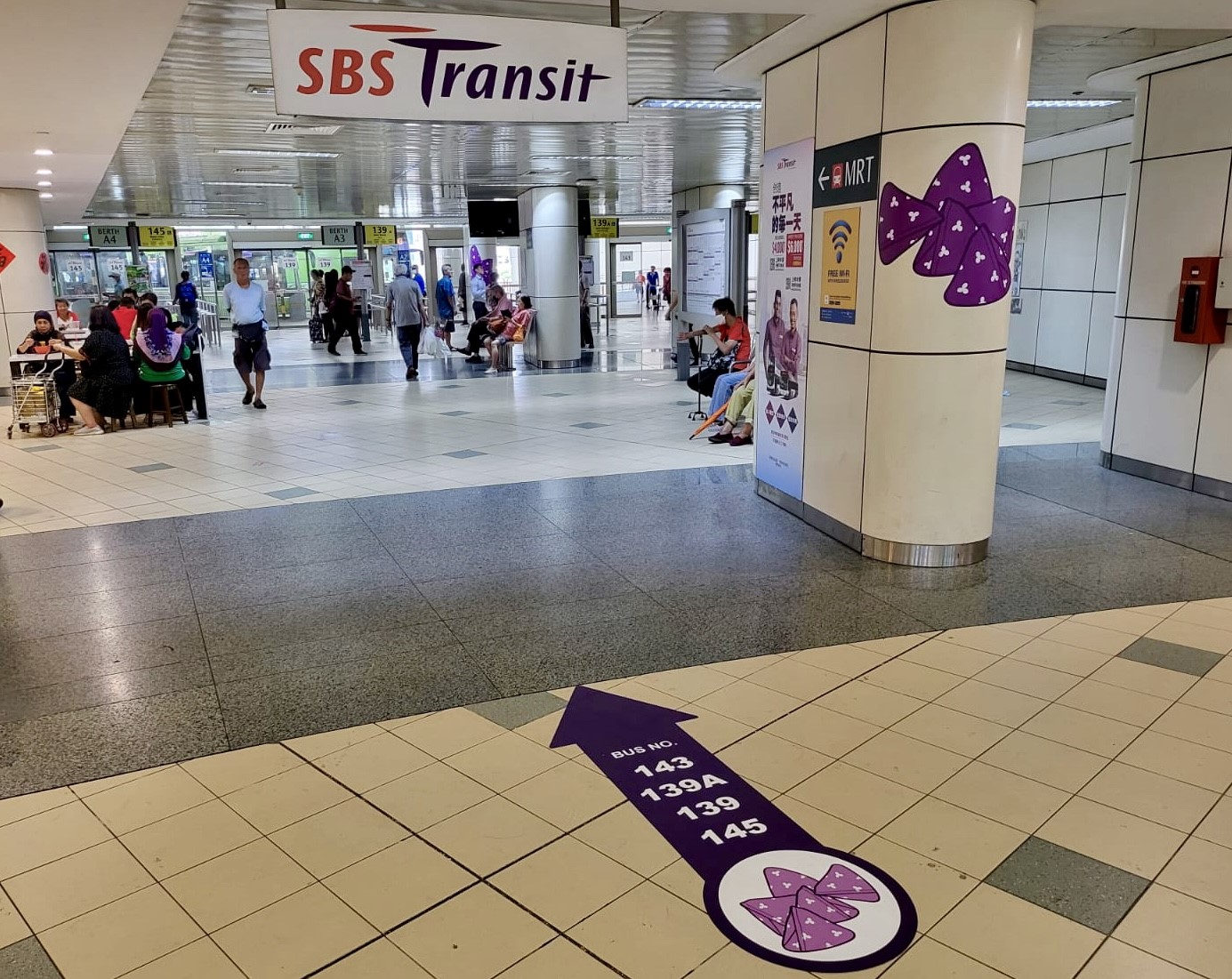
Five stones is a traditional game popular with children in the kampong days.
Berth A5 to A10: Orange Chaptek
Service 8
Service 31
Service 88
Service 90
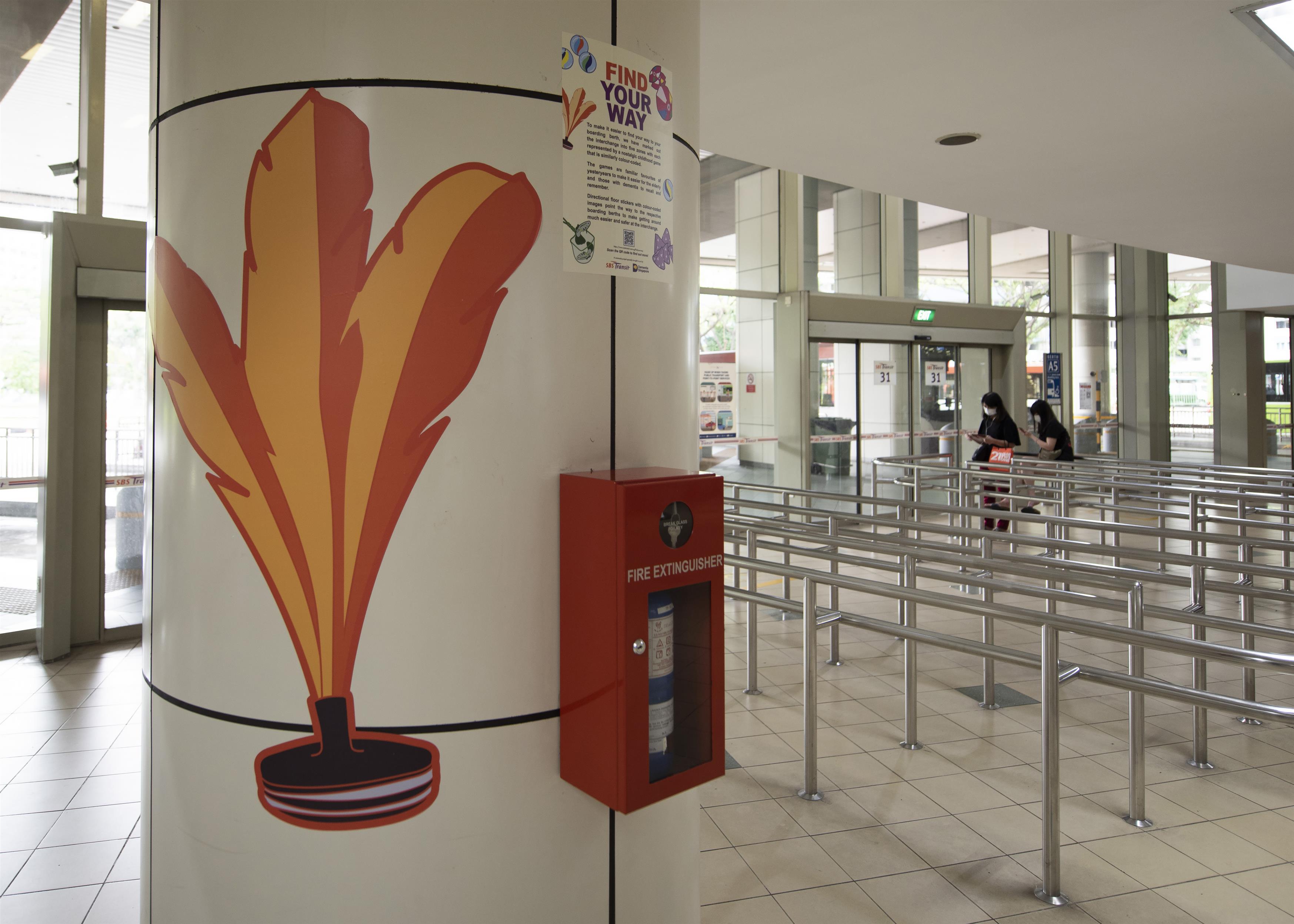
Chaptek is played by kicking the feathered shuttlecock to keep it in the air for as long as possible.
Berth A11 to A14: Pink Traditional Paper Ball
Service 26
Service 28
Service 155
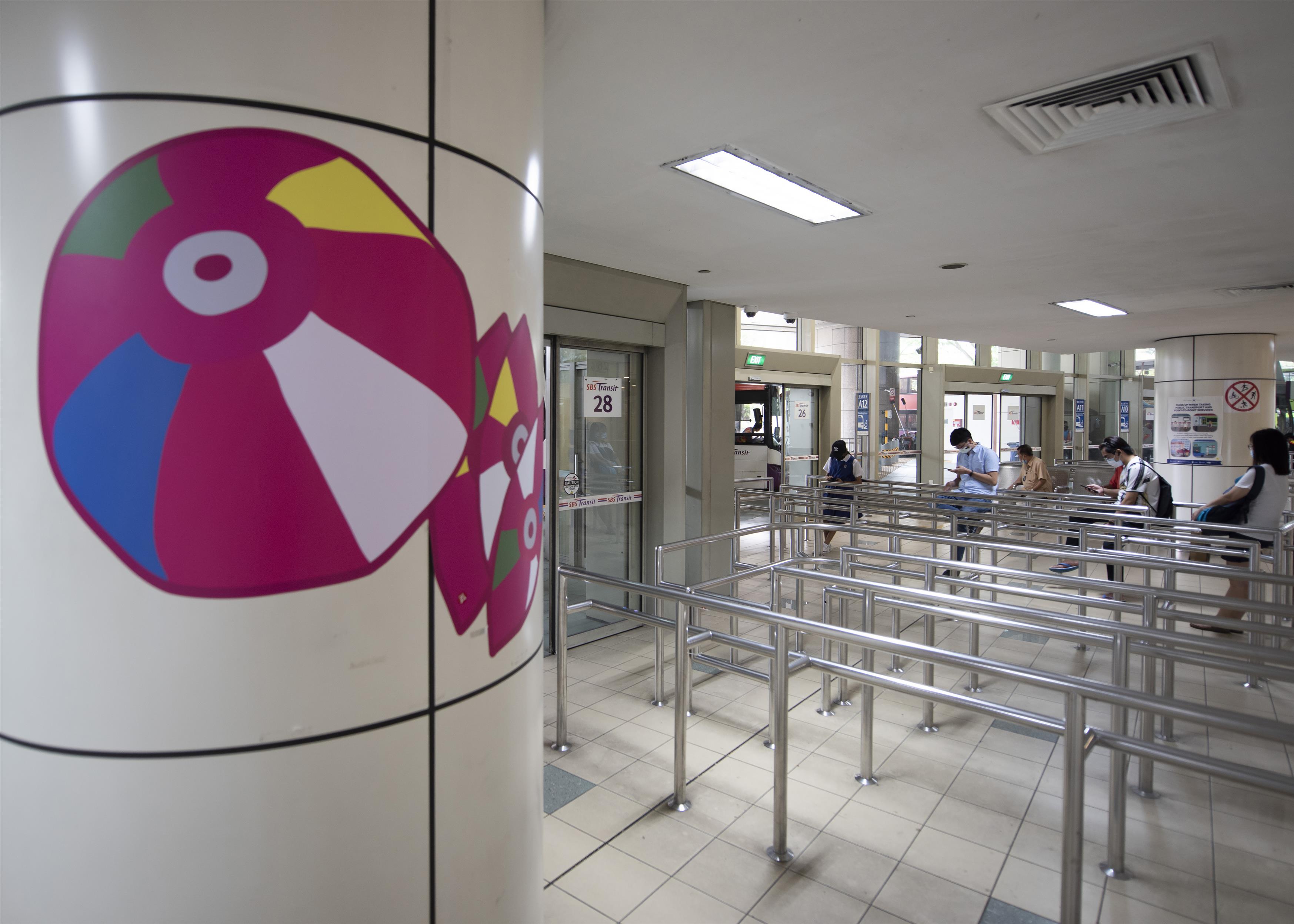
The traditional paper ball is light and easy to inflate, a fun game to pass time with friends.
Berth B1 and B2: Blue Marbles
Service 142
Service 231
Service 232
Service 235
Service 238

Another popular game in the olden days, it is played by throwing one’s marble into a drawn circle on the ground to displace an opponent’s marbles.
Berth B3 and B4: Green Fishnet
Service 73
Service 141
Service 157
Service 159
Service 163
Service 230
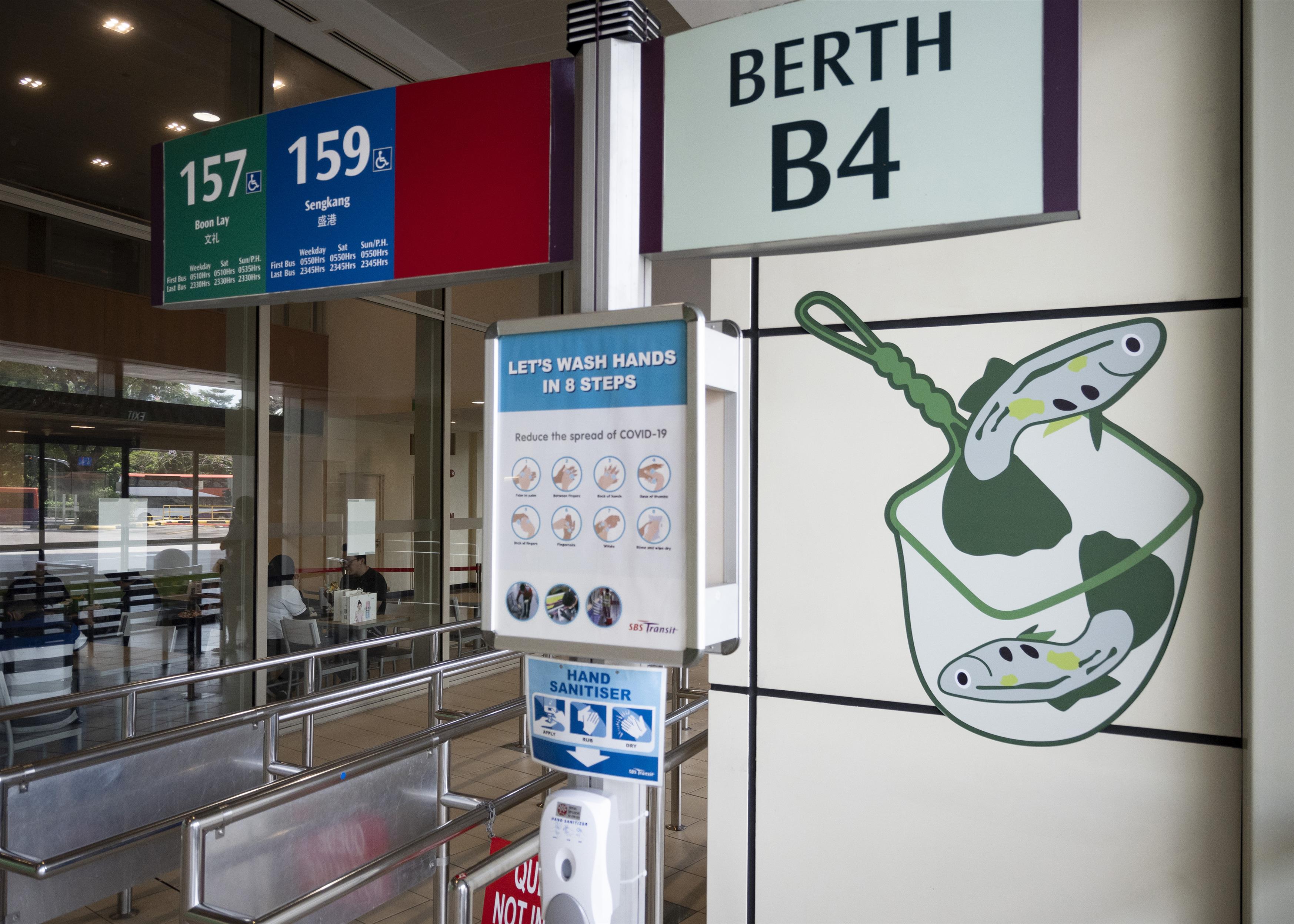
Known as longkang fishing, children will visit canals and streams to catch small fishes in the kampong days.
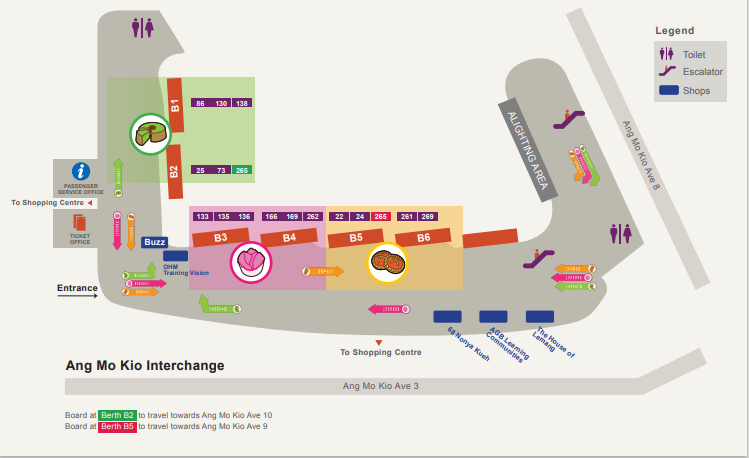
Traditional delights commonly found in many of the food centres in the mature estate were chosen for the murals at Ang Mo Kio Bus Interchange.
Berth 1 and 2: Pandan Cake
Service 25
Service 73
Service 86
Service 130
Service 138
Service 265 (East Loop)
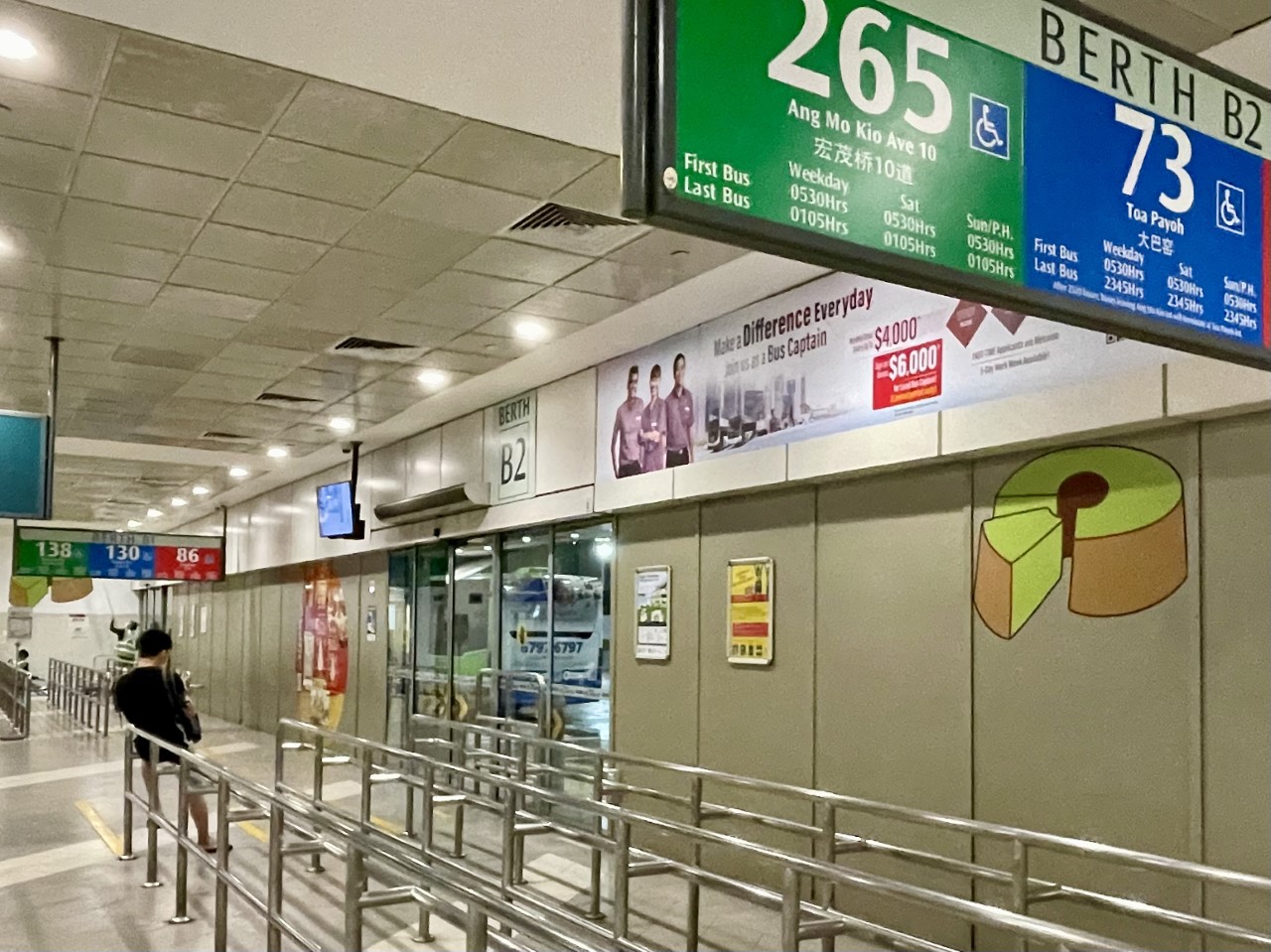
The pandan cake is also known as Singapore’s national cake.
Berth 3 and 4: Huat Kueh
Service 133
Service 135
Service 136
Service 166
Service 169
Service 262
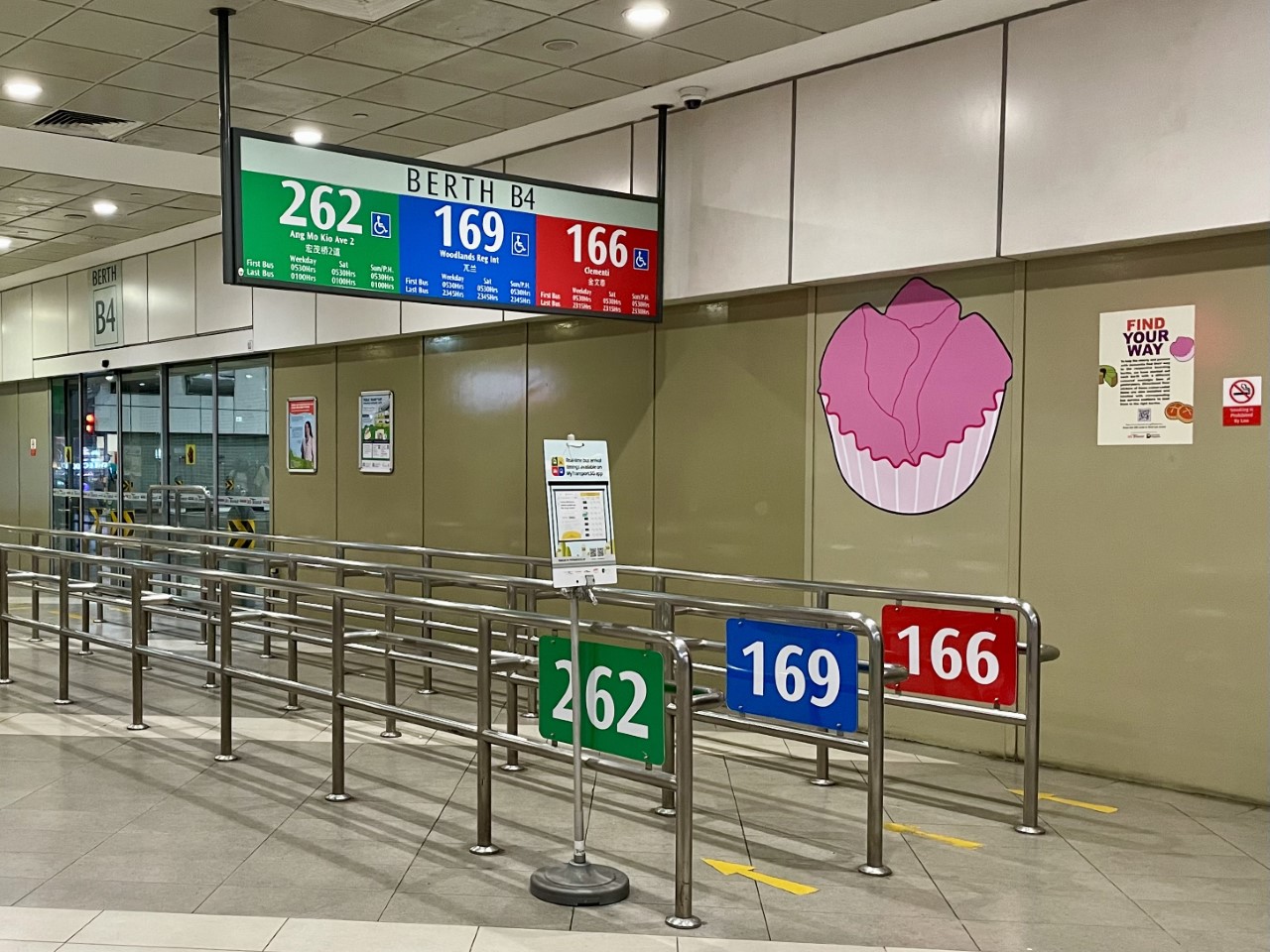
The huat kueh is a traditional steamed cake that symbolises prosperity.
Berth 5 and 6: Pineapple Tarts
Service 22
Service 24
Service 261
Service 265 (West Loop)
Service 269

Symbolising good fortune and luck, the pineapple tart is served during festivities, especially the Lunar New Year.

Berth B1: Yellow Enamel Mug
Service 74
Service 147
Service 329
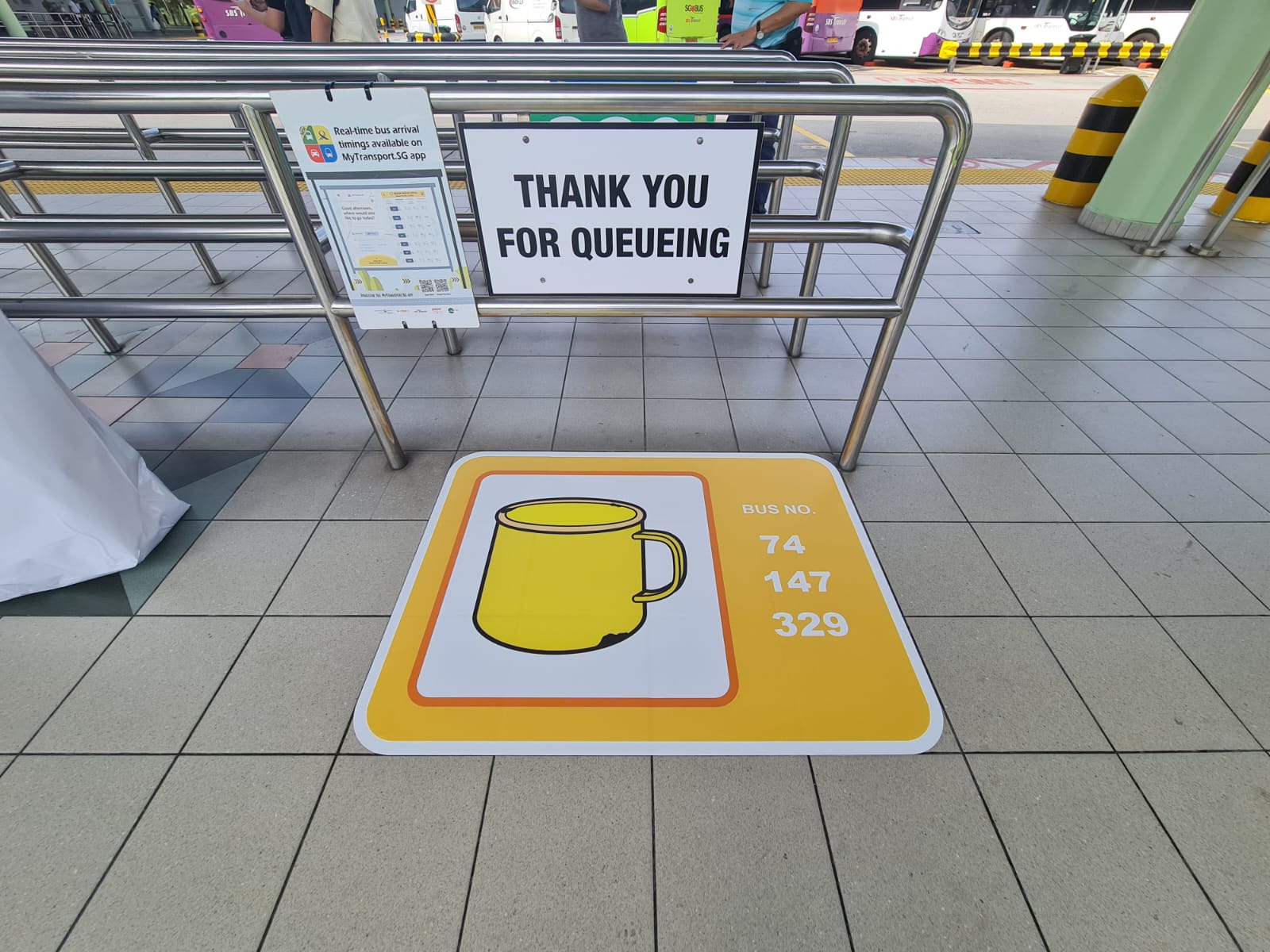
Commonly found in our grandparents' kitchens during the 1960s, the timeless enamel mug remains a popular item even today, especially for camping trips, owing to its lightweight nature.
Berths B2 and B3: Blue Porcelain Bowl
Service 27
Service 89
Service 89e
Service 102
Service 113
Service 132
Service 161
Service 165
Service 325
The classic blue and white design of the porcelain bowl serves as a nostalgic reminder of the wide range of traditional tableware (bowls, dishes, and cups), which was commonly used in households during that era.
Berth B4: Green String Chair
Service 107
Service 107M
Service 112
Service 116
Service 153
The string chair, a household essential in the olden days, provided a cozy spot for our pioneers to sit back and relax while enjoying their favourite television shows.
Berths B6: Orange Vintage Television
Service 51
Service 151
Service 324
The vintage television, once considered a luxurious item to own, now brings back fond memories of a time when the entire kampong would gather together to watch and bond over television shows.
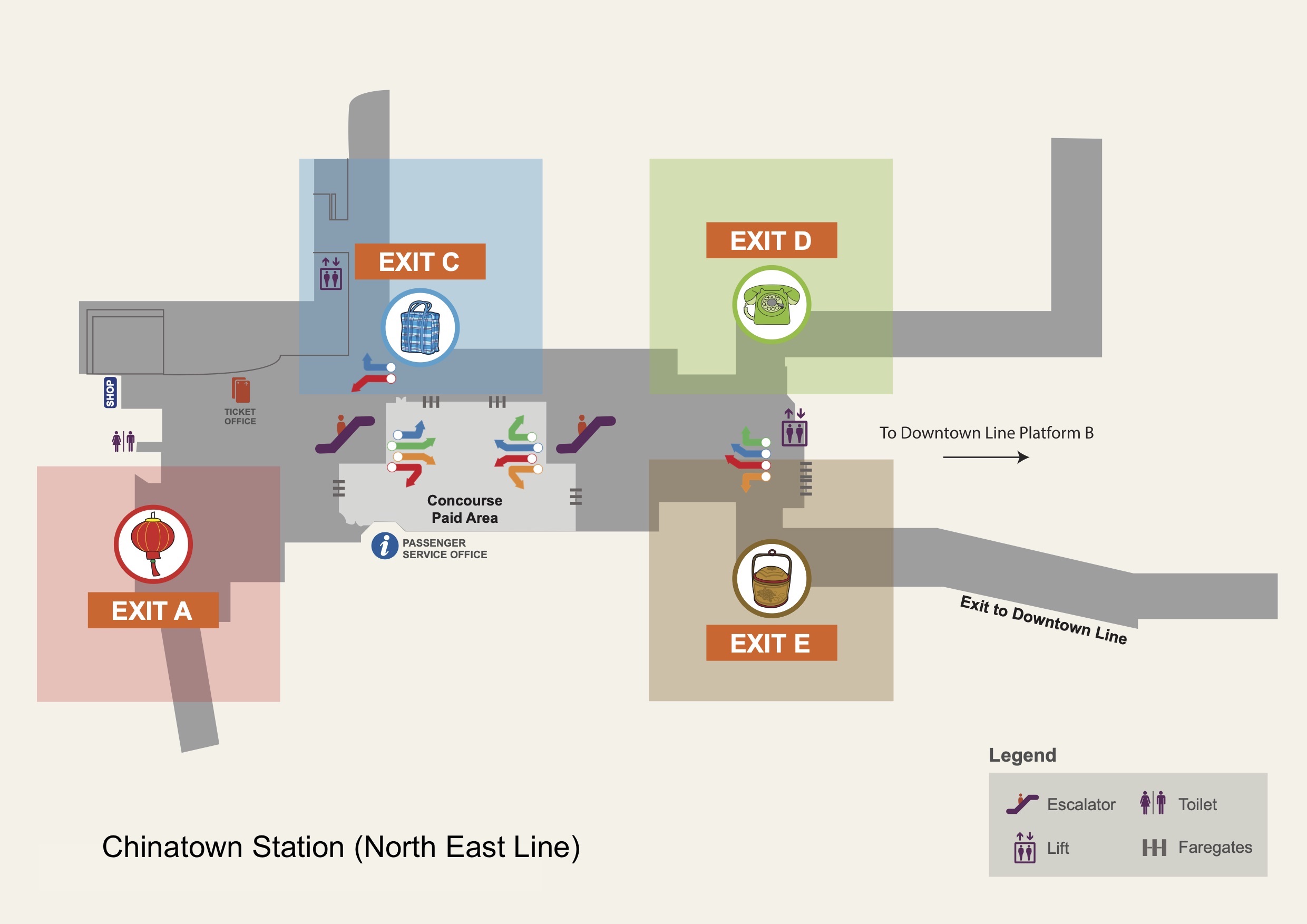
Everyday items of yesteryears associated with the landmarks of each exit were chosen for the murals at Chinatown MRT Station.
Exit A: Red Lantern
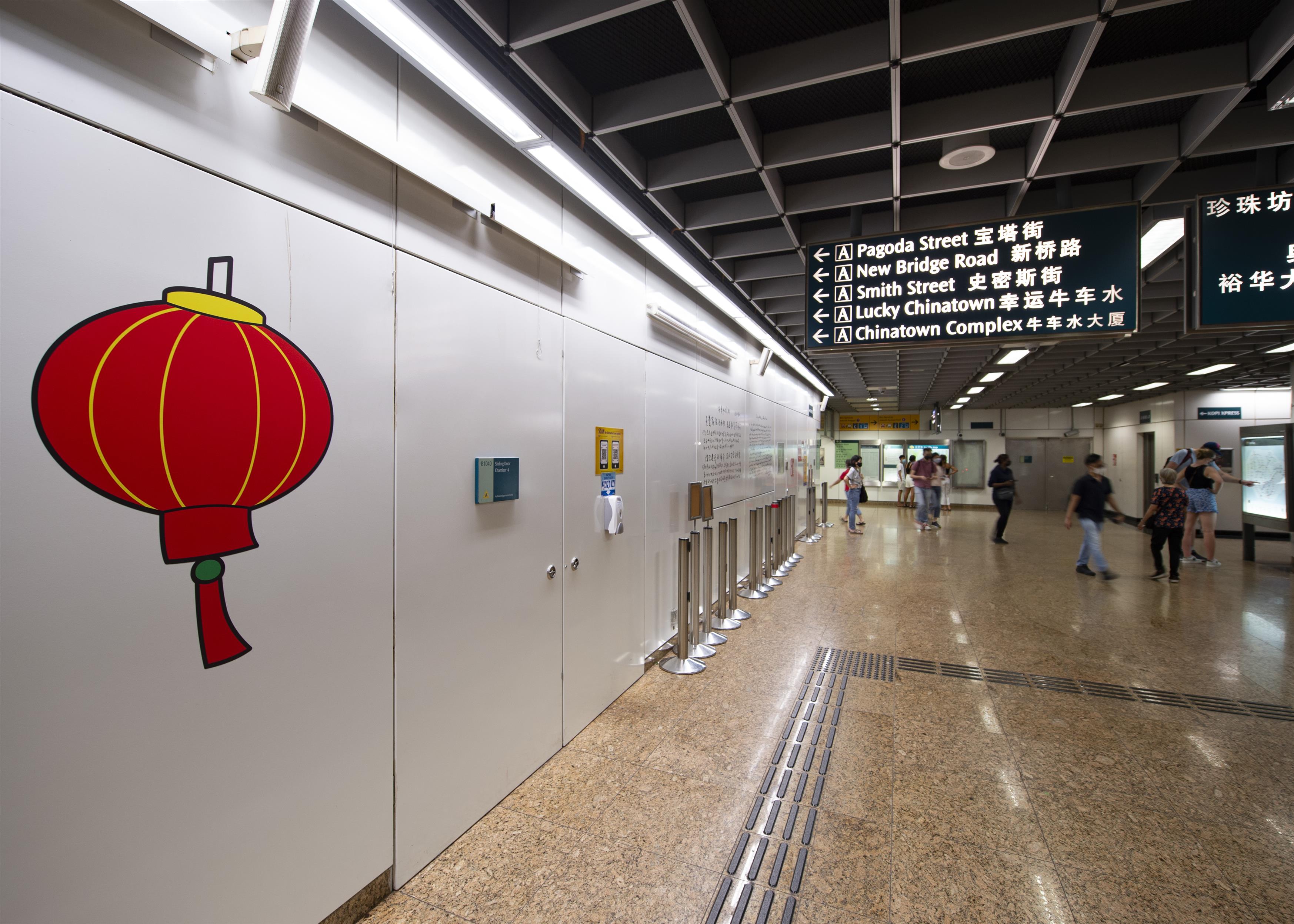
The red lantern reminds the elderly of traditional shophouses at Pagoda Street decorated with red lanterns.
Exit C: Blue Plastic Carrier Bag
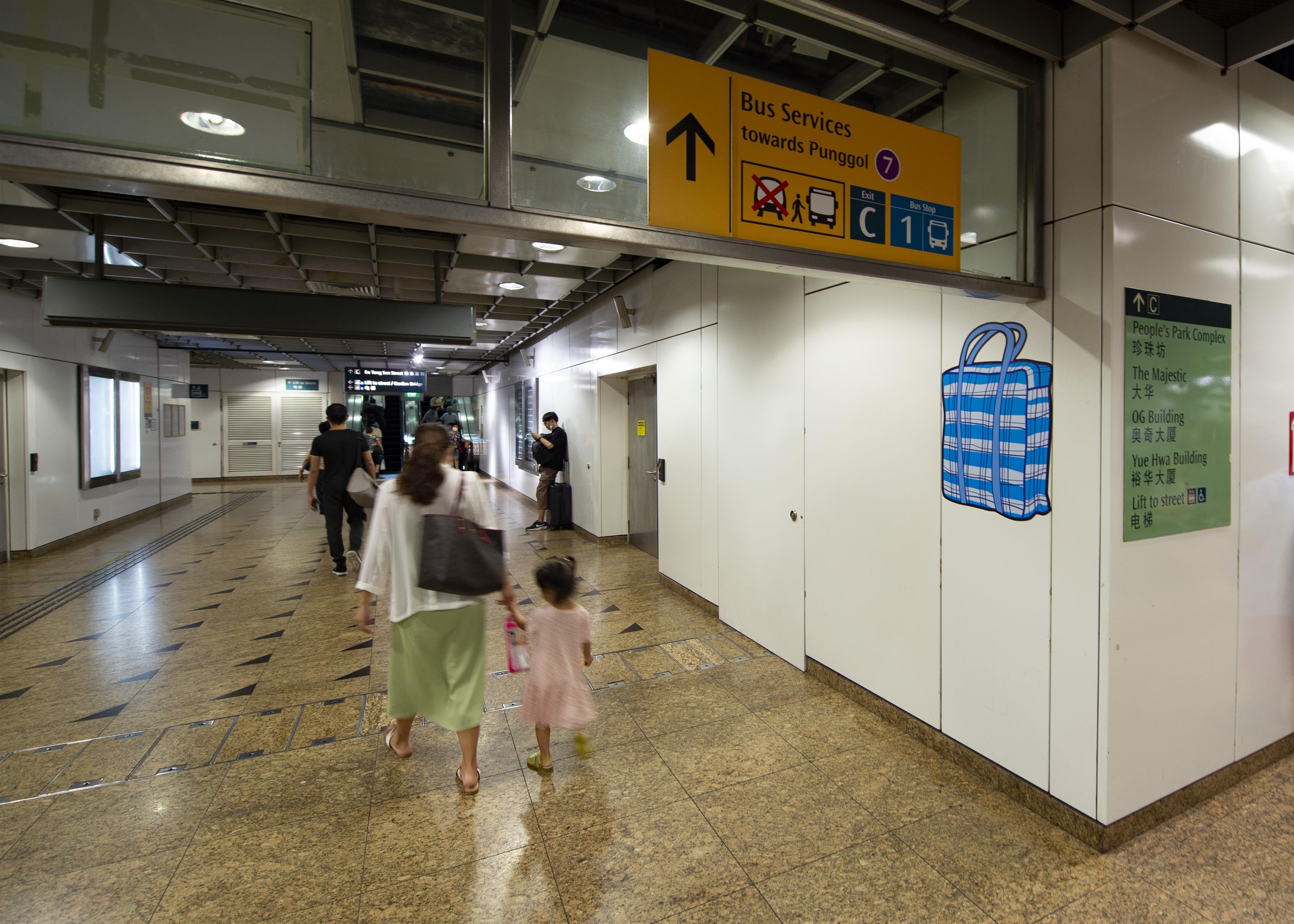
The blue plastic carrier bag is associated with shopping at People’s Park Complex and OG Building.
Exit D: Green Rotary Telephone
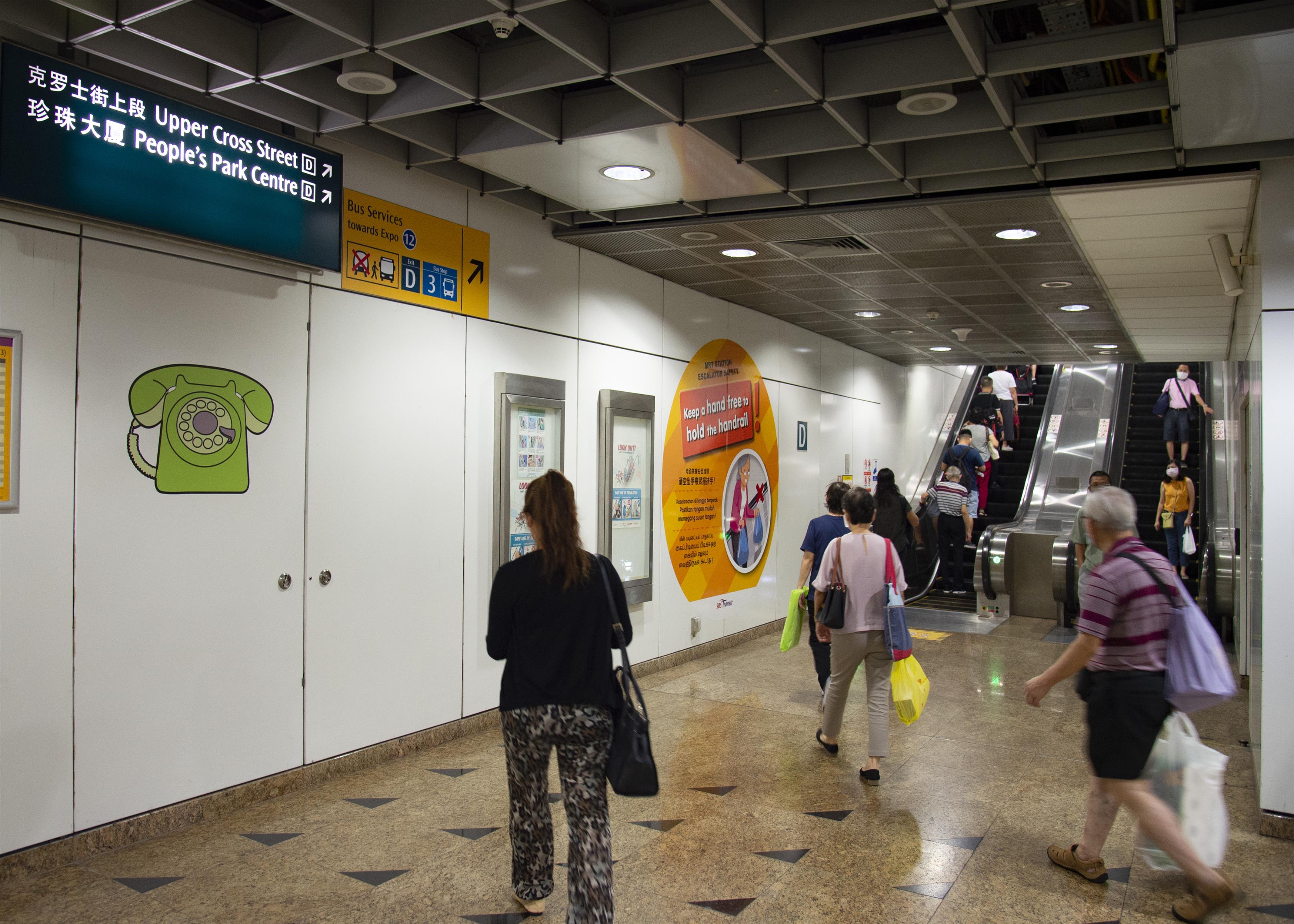
A rotary telephone represents the shops at People’s Park Centre in the olden days.
Exit E: Brown Cylindrical Bamboo Basket

The brown cylindrical bamboo basket, customary to Chinese weddings, reminds elderly of the shops selling bridal biscuits.
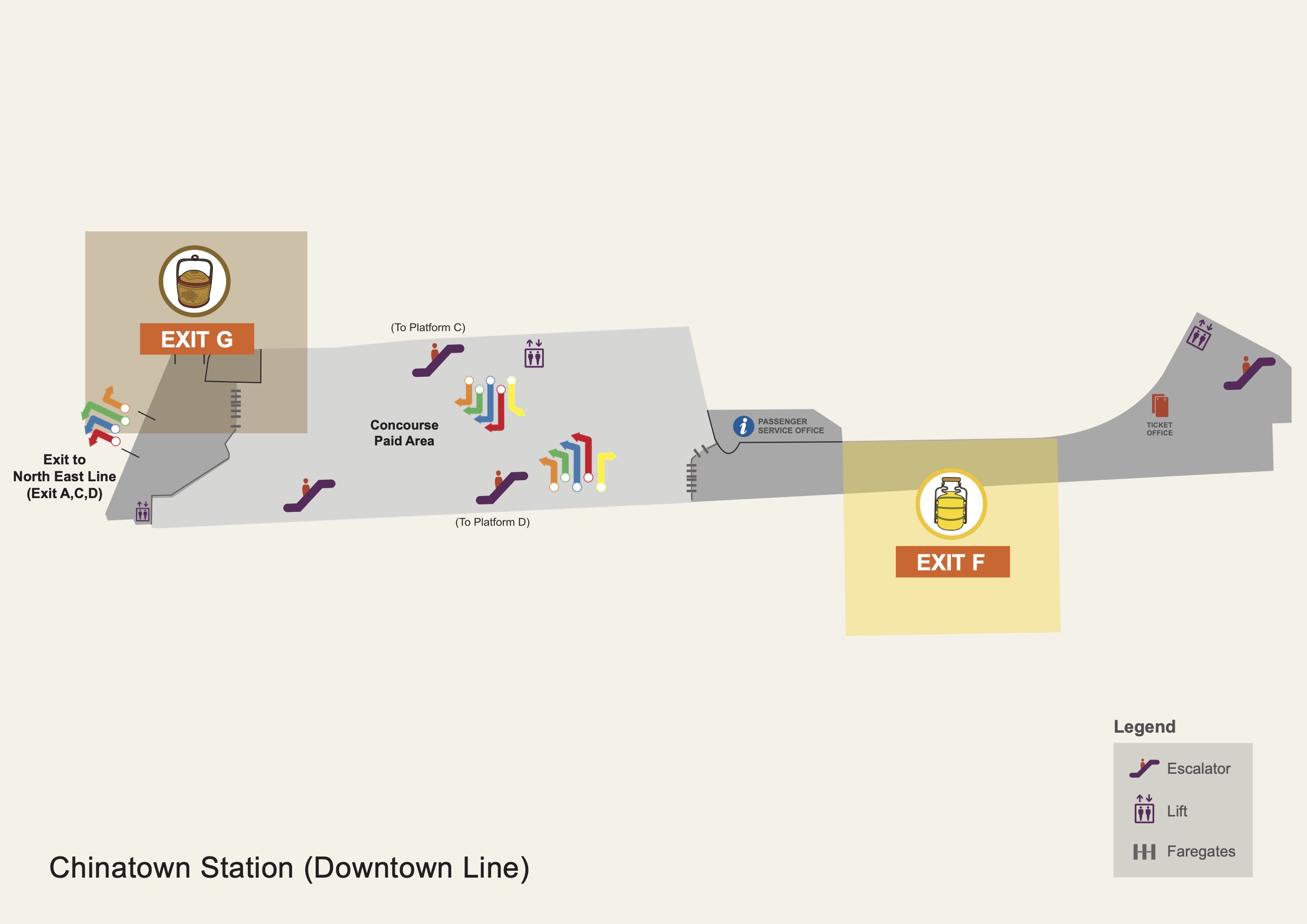
Exit F: Yellow Enamelled Tiffin Carrier
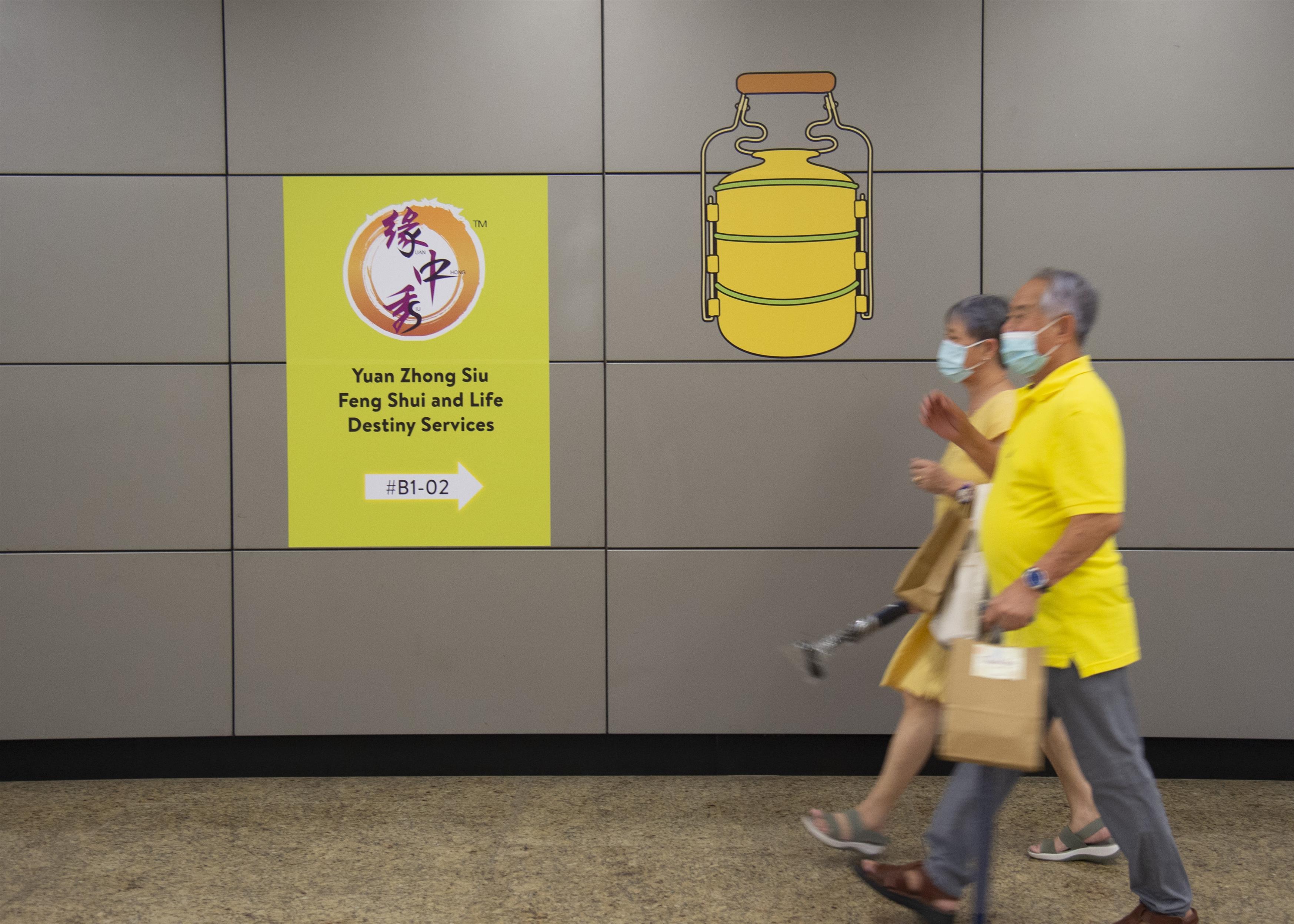
The yellow enamelled tiffin carrier, also known as ‘Tingkat’, was chosen in view of the hawker stalls in the vicinity.
Exit G: Brown Cylindrical Bamboo Basket

The brown cylindrical bamboo basket, customary to Chinese weddings, reminds the elderly of the shops selling bridal biscuits.
At Mattar MRT Station, prominent landmarks of each exit were represented by murals featuring old-school treats that capture the spirit of the area.
Exit A: Gem Biscuits
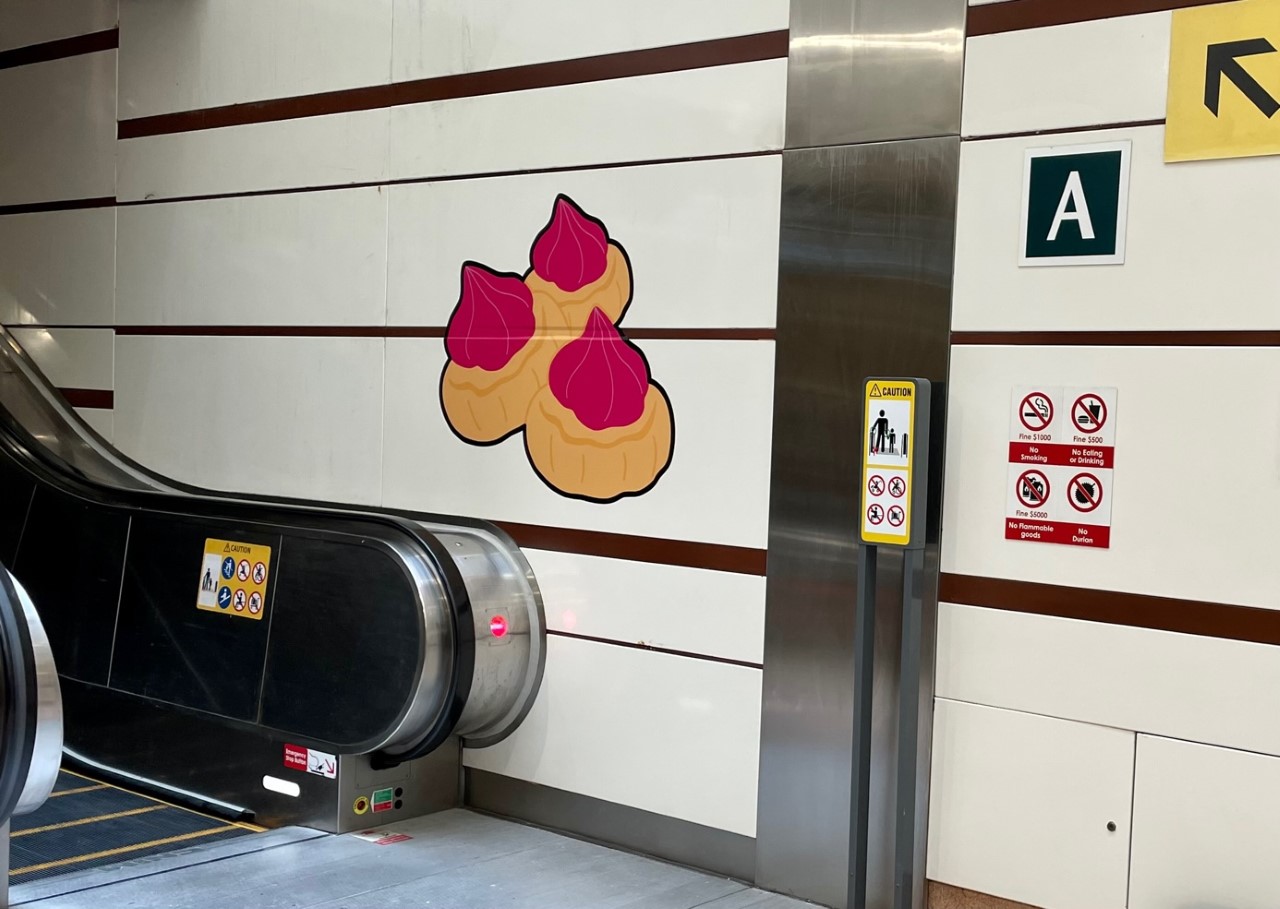
A beloved snack that many of us often enjoyed during our childhood was chosen in view of the nearby schools.
Exit B: Chendol
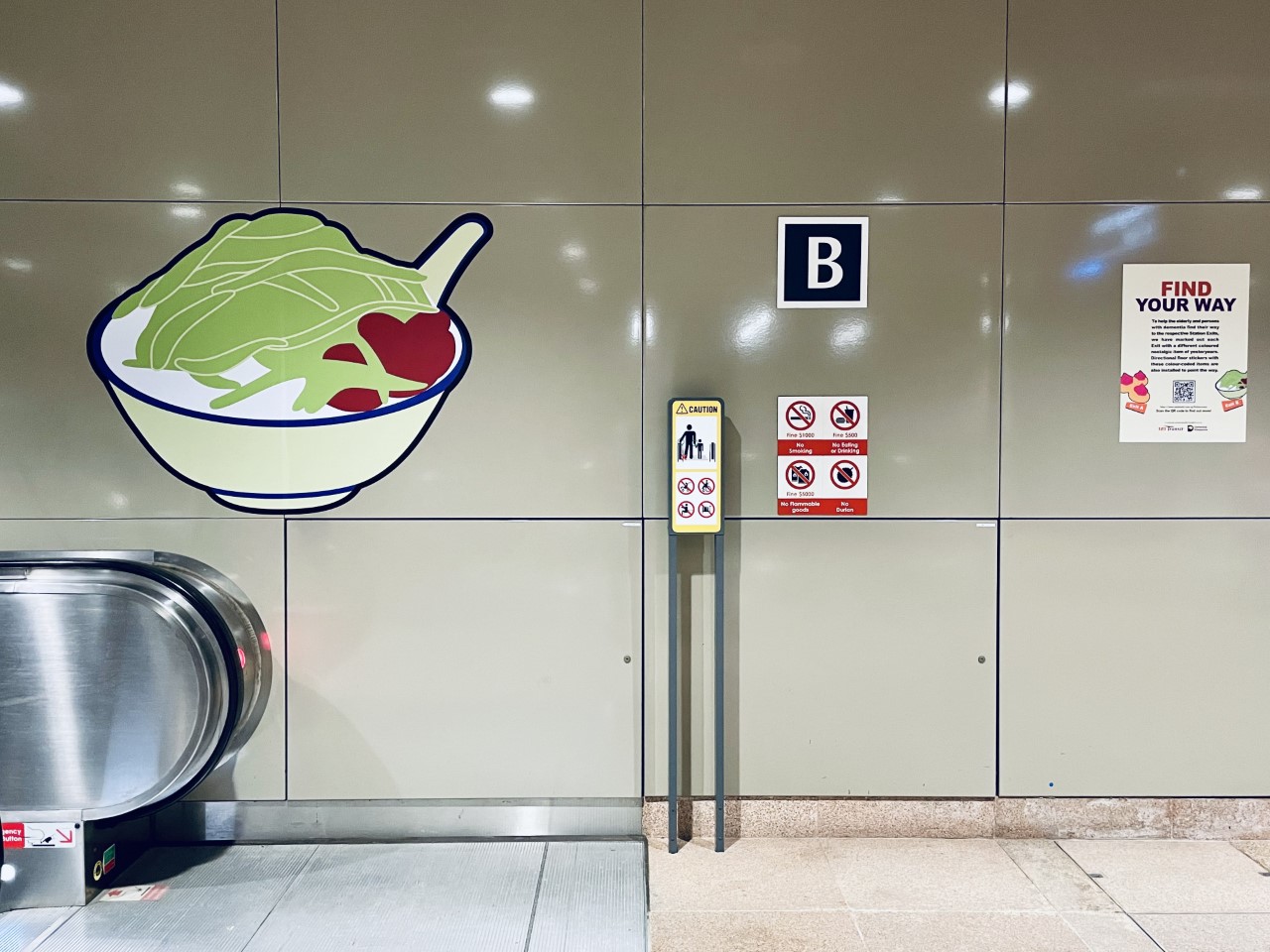
The popular Asian dessert, found in most hawker centres, reminds the elderly of the nearby Circuit Road Hawker Centre.
For the murals at Geylang Bahru MRT Station, we drew inspiration from traditional childhood games that were popular with the Malay community as the area was once home to the Malay Village (now known as Wisma Geylang Serai).
Exit A: Blue Gasing (Spinning Top)
.jpg)
Gasing was a popular game back in the kampong (village) days. Players spin a top and the winner is the one whose top spins the longest within a circle. Interestingly, farmers believed that playing gasing would bring them a bountiful harvest.
Exit B: Green Wau Bulan (Moon Kite)
.jpg)
Farmers used to fly the Wau Bulan, a beautifully and intricately crafted traditional kite, over their paddy fields to keep birds away.
The Boon Keng Station murals, featuring household items of yesteryears, pay homage to the old shops and markets of the area.
Exit A: Pink Table Fan
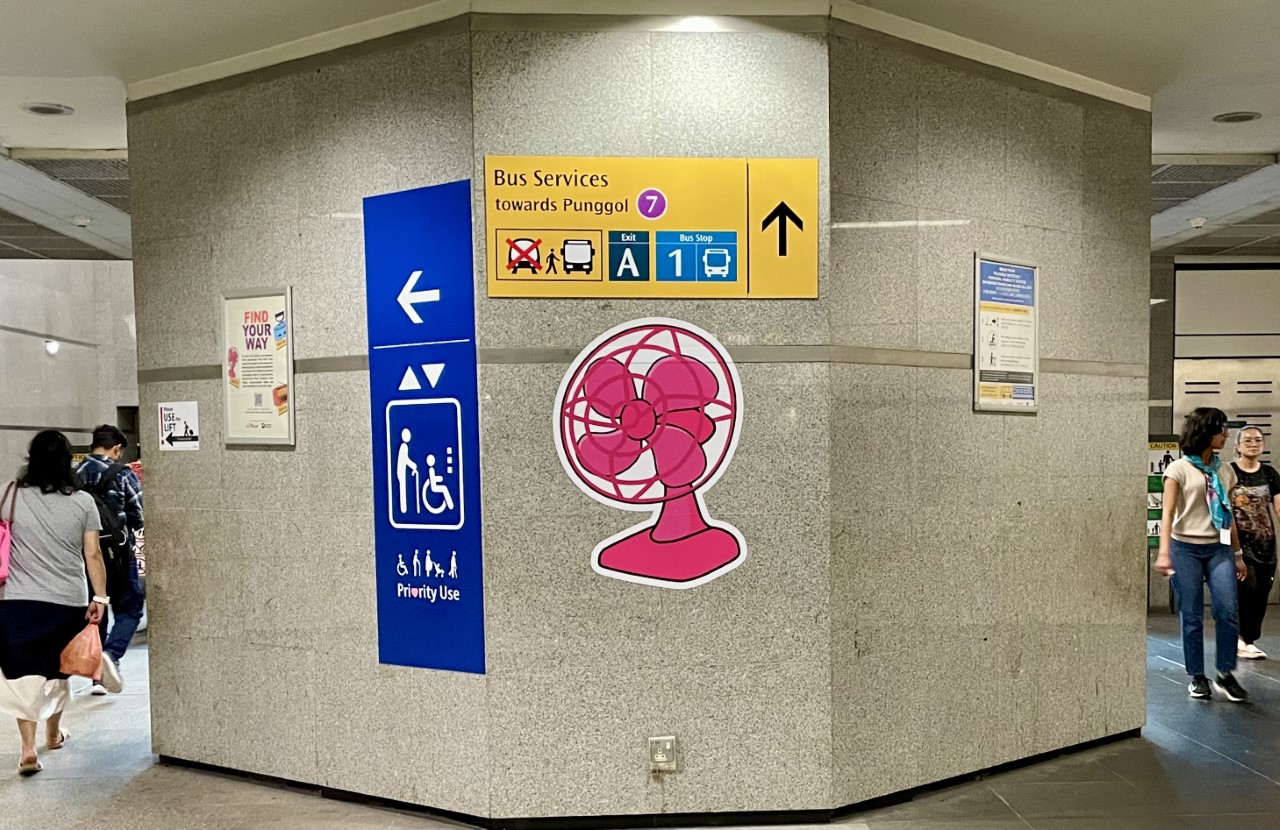
In the good old days, the table fan was a must-have household item to combat the sweltering heat.
Exit B: Blue Charcoal Iron
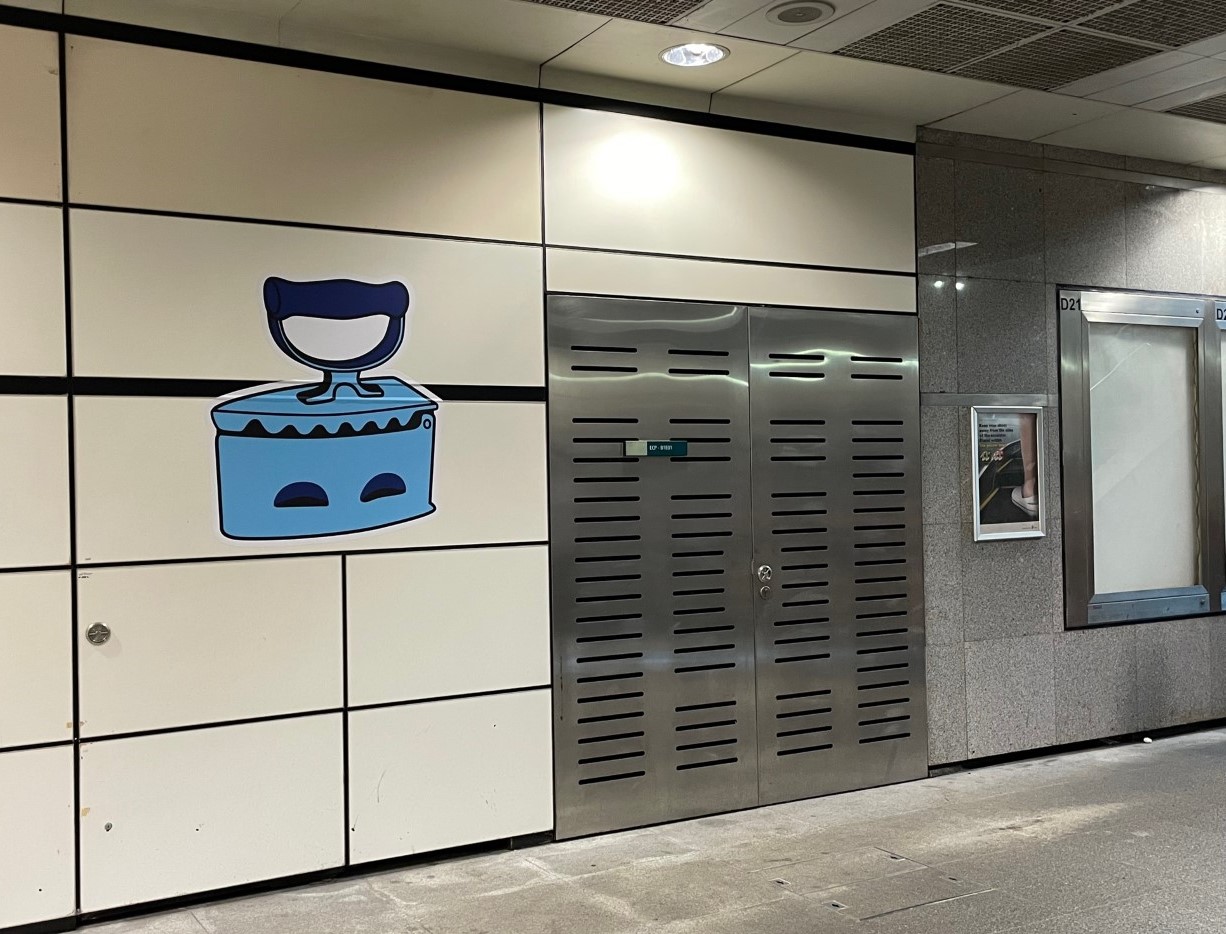
The charcoal iron derives its name from the use of hot charcoal inside the iron to remove wrinkles and creases from clothes.
Exit C: Orange Vintage Radio

The vintage radio allows our seniors to relive their childhood when listening to the radio was a common pastime.
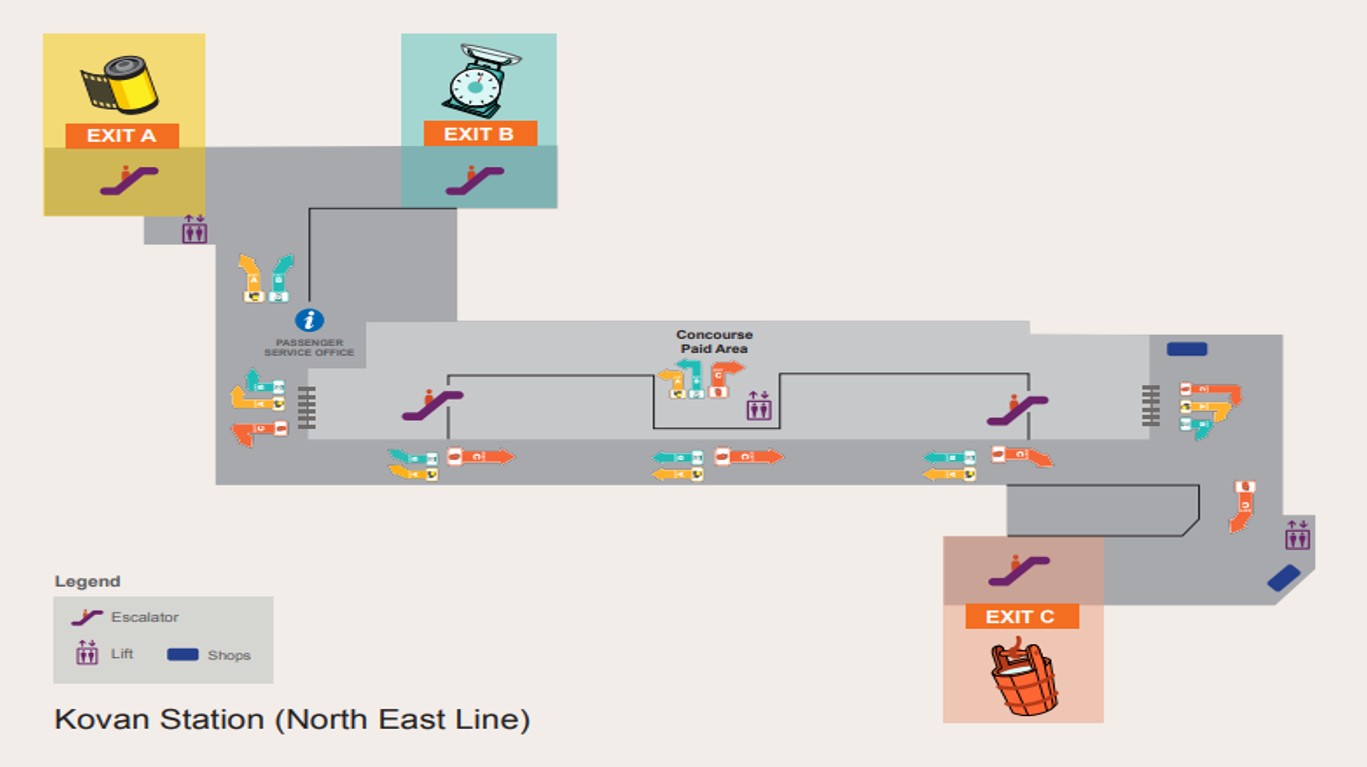
The murals at Kovan MRT Station feature nostalgic icons that represent the historical landmarks of the area.
Exit A: Yellow Film Roll
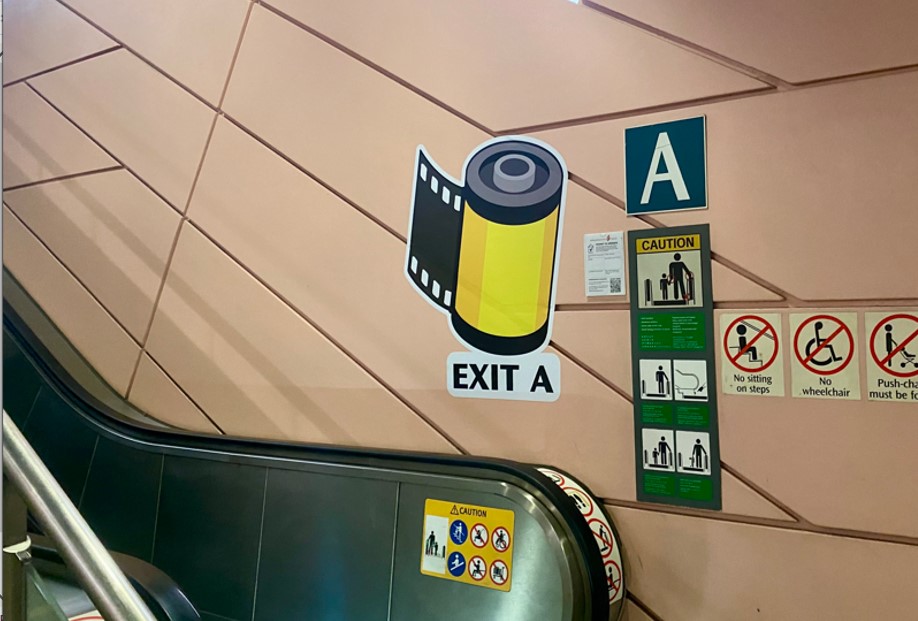
The film roll brings back fond memories where people used to enjoy movies at the former Empire Theatre in the good old days.
Exit B: Blue Weighing Scale
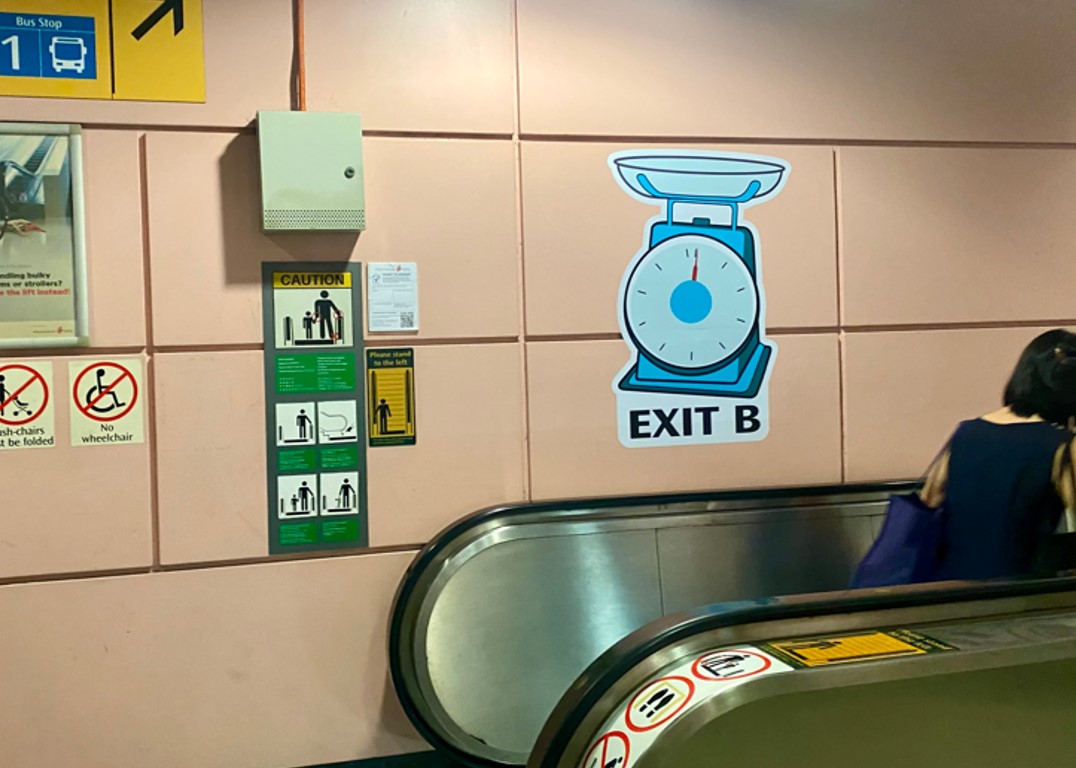
The traditional weighing scale was a familiar sight in markets and provision shops in the past.
Exit C: Orange Wooden Water Bucket
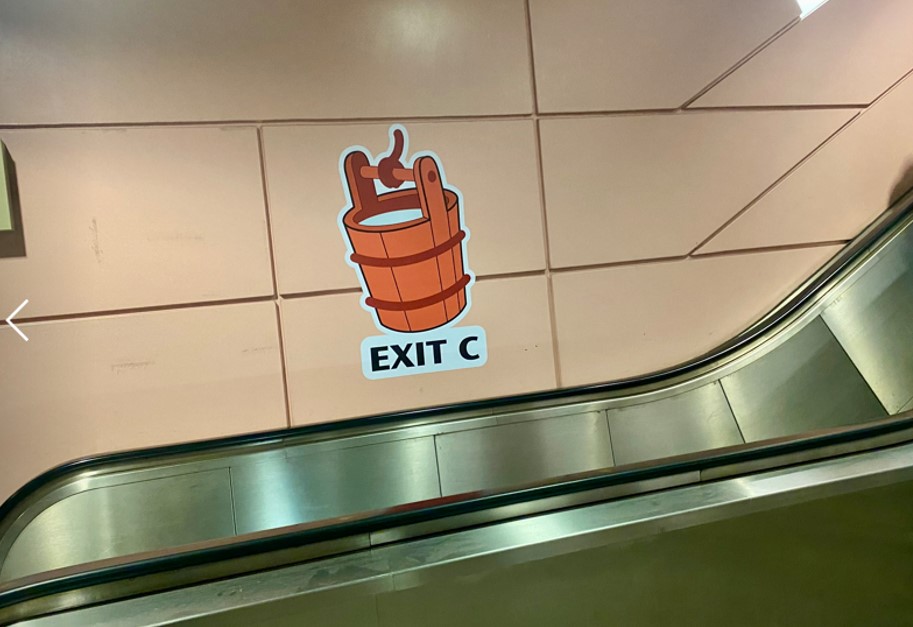
The wooden water bucket is a poignant reminder of the area's famous water well, affectionately known as "Tua Jia Kar," where our pioneers used to draw water from.
